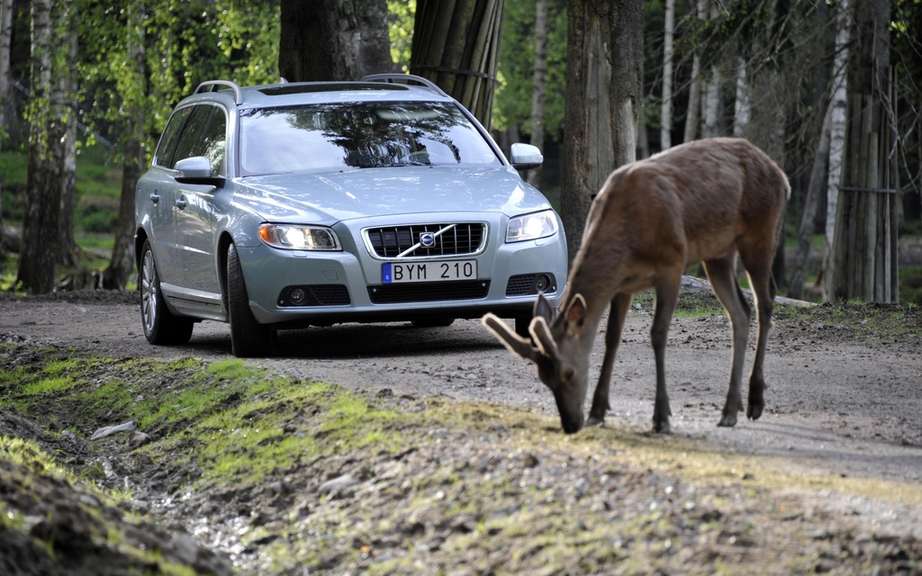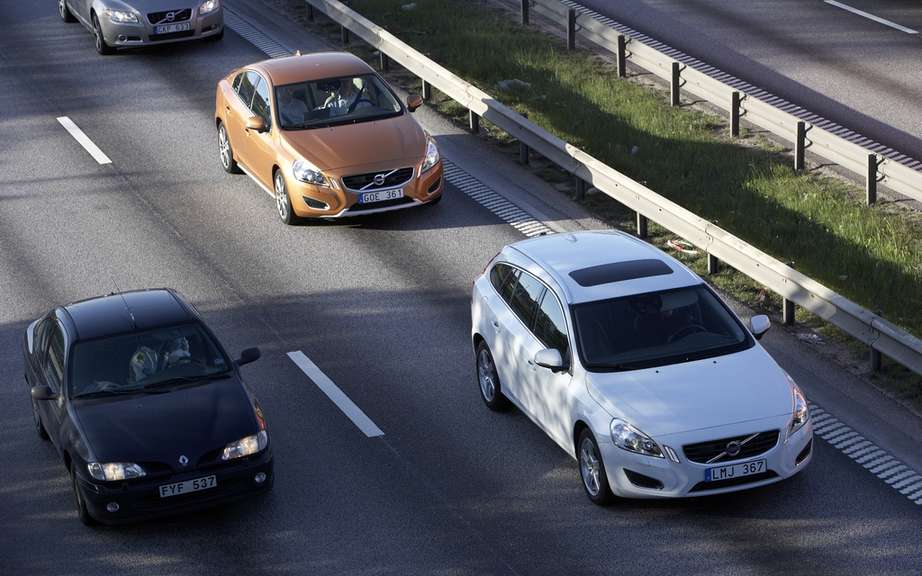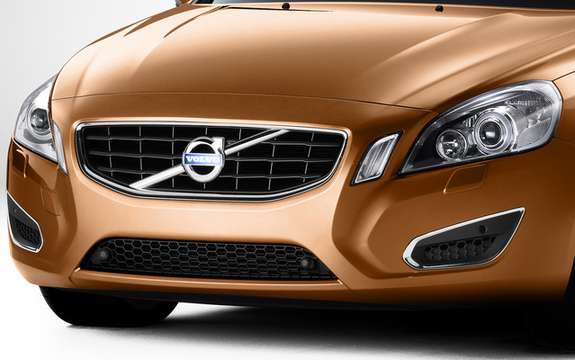Volvo does not want any death or serious hurts in its vehicles in 2020
By developing several security solutions unpublished, Volvo Car Corporation is taking an important step in its goal clearly displayed: no more death or serious injured in a vehicle of the brand in 2020.
Security experts at Volvo Car Corporation undertook a huge development work to realize its goal of no more brand vehicle involved in a collision in the future. A first step in this direction, because the 2020 target is to have no more death or serious injured in a vehicle of the brand.
"We are taking decisive action in the right direction. We have a number of research projects aimed at developing technologies for future Volvo models, "says Jan Ivarsson, Head Strategy and Safety requirements of Volvo Car Corporation. Many of these new technologies are designed based on the behavior of drivers in today's traffic. Current drivers have nothing to do with their predecessors. For example, if one believes three U.S. research institutions, today's drivers spend 20 to 30% of their time driving to something else, such as caring for their telephone communications.
Drivers are more numerous in make calls, read their emails and SMS while driving. And behaviors, given that they affect driver vigilance must be taken into consideration during the development of new technologies.
"In the current mobility company, we carry our social life with us or we go. The car is no exception to the rule. For us, it is simply to develop a technology that provides the driver with support fits at any moment, "says Jan. Ivarsson.
Research Volvo Car Corporation is focused on three key areas: maintaining safely in the hallway traffic, prevention of accidents at junctions and intersections, as well as collisions with wildlife. Here are the research projects in progress:
Assistance autonomous driving
Assistance to intersections
Detection of animals
Autonomous driving in traffic
Thanks to the assistance autonomous driving, the driver keeps the car in his lane of traffic and keeping pace traffic forms when bottling.
"The traffic delays are part of everyday monotonous and boring many motorists. Thanks to technologies autonomous driving, the car can comfortably and safely, helping the driver to follow the vehicle ahead, "says Fredrik Lundholm, Developer Functions Functions Security Department.
Using the data provided by a camera and radar detectors, the car is able to follow the vehicle in front (see graphic and video). Engine, brakes and steering react automatically. If the vehicle ahead is forced to make a sharp discrepancy was due to an obstacle on the road, the steering assists the driver by modifying itself the path of the vehicle accordingly.
"This feature provides a very strong potential to facilitate the life of the driver. Our advanced technologies of the first generation focused on driving accordion, a low speed. The car follows the vehicle ahead in the same lane of traffic. However, it is always the driver who decides and who can take control at any time, "says Fredrik Lundholm.
Automatic braking at intersections
Junctions and intersections are the most complex issues of the environment of the current traffic. Many road users simultaneously cross the path of other vehicles from different directions. It is important therefore to avoid small mistakes may lead to serious consequences.
United States, 21.5% of accidents in 2007 occurred at intersections; the corresponding figure was 20.6% in 2006 in 16 countries of the European Union (except Sweden).
Mattias Brannstrom, Doctor of active safety functions, is responsible for the Assistance to Intersections, research project developed within Volvo Car Corporation in collaboration with the Department Signals and Systems at the University of Technology Chalmers. The alert triggers and automatic braking if necessary to crossovers (see graphics and video) system.
"Attendance at intersections uses a sensor to assess the entire scenario of movement. In case of detection of emergency, the intervention decision is made at the speed of lightning, "Mattias Brannstrom precise.
In support of his demonstration, he draws a line of cars turning left at an intersection. When the light turns green, cars turning left one after the other. Suddenly, a car oncoming turns red and creates an immediate danger.
"In this situation, the car automatically brakes to avoid running the collision. Attendance at intersections acts as a system that overcomes the faults not only the driver but also those of other road users, "says Mattias Brannstrom.
He explained that the demarche of Volvo Car Corporation in matters of security is to ensure that the vehicles react as human beings. Sensors are the eyes, the computers are the brain and the brakes are the muscles.
"With our advanced technologies, we strive to do what people would do in the same situation if they had time to react. We want to provide assistance to as many situations as possible, "says Mattias Brannstrom.
To obtain the necessary to the development of these data systems, vehicles travel hundreds of thousands of miles around the world in different traffic situations. After all, the system should prove to be able to assist drivers as well both in Bangkok and Vancouver, being adapted to local differences in driving style and traffic density.
Detection of Animal-BASED collisions with wild animals
Of course, this data collection is not limited to urban centers. Rural and most remote regions in the middle, there are many collisions involving wild animals.
Accidents involving wild animals is a major international problem of traffic. In Canada, it is reported each year 40,000 accidents of this nature, that damage vehicles. Sweden reports for the year 2010 47 000 collisions with animals, including 7,000 with impulses. Conditions in Canada and Sweden are also found in Norway, Finland and Russia. In the U.S., about 200 people die each year as a result of a collision with wild animals, mainly deer.
However, these official accident statistics do not tell the whole truth. For example, they do not include all accidents or driver, giving swerved to avoid a wild animal, then collides with another vehicle or has been off the road. According to a study of accidents conducted by the University of Umea and covering the period 2003-2010, no less than 23% of deaths occurred after the driver has given swerved to avoid an elk on the floor: these figures do not appear in official statistics on collisions with wild animals.
Volvo Car Corporation is currently working on the Detection of Animals, system that detects animals and automatically triggered braking, day and night (see graphics and video).
"This technology is an extension of our system of pedestrian protection. We pays considerable attention to the operation of the system in the dark since most collisions with wild animals occur at dawn and dusk, "explains Andreas Eidehall technical expert in Active Safety.
Accidents involving wild animals often occur at speeds cruise. The objective is to reduce the impact speed, initially 100-110 km / h, less than 80 km / h. With a lower speed 80 km / h, the security systems of the vehicle are effective and the risk of serious injuries become minimal. This requires detect the animal at a distance of 30 meters.
Other non-negligible aspect the response time, that is to say, the delay between the identification of the object and the reaction of the system.
"With advanced technologies, we can further shorten the response time to improve the efficiency of the system," Andreas Eidehall precise.
The system is able to recognize the shape of animals and their way to get around thanks to huge amounts of data collected. The collection of pictures of animals in motion is a continuous process. Permanent but complicated because wild animals in many ways mastered the art of dissimulation.
"The data collection can help us understand how to detect what nature strives to hide from us is a huge challenge. We focus our efforts on large animals because they are the ones that cause the most damage and the most serious injury. We worked on elk and deer great, and have recently added horses and cattle. For the next step, we will look at the possibility to detect smaller animals, such as deer and wild boar, "says Anders Eidehall.
The success through cooperation
"The development of these technologies has increased fast concludes Jan Ivarsson. And we intend to take advantage of the steady decline of sensors and other electronic components to equip all of our vehicles. That said, a close collaboration with governments, insurance companies and other manufacturers is also crucial to realize the vision of an environment free from traffic accidents. "
View the gallery











